COP26 and fashion: What happens next?
The Fashion Revolution team has just returned from COP26, the UN climate change conference. We spent two weeks hosting Fashion Open Studio workshops across Glasgow, attending and speaking at various fashion industry events and marching for climate justice. We’ve also been busy talking to businesses, policymakers and civil society organisations about fashion’s role in the climate crisis, and engaging activists and influencers with the questions of ‘Who Made My Clothes?’ and ‘What’s In My Clothes?’
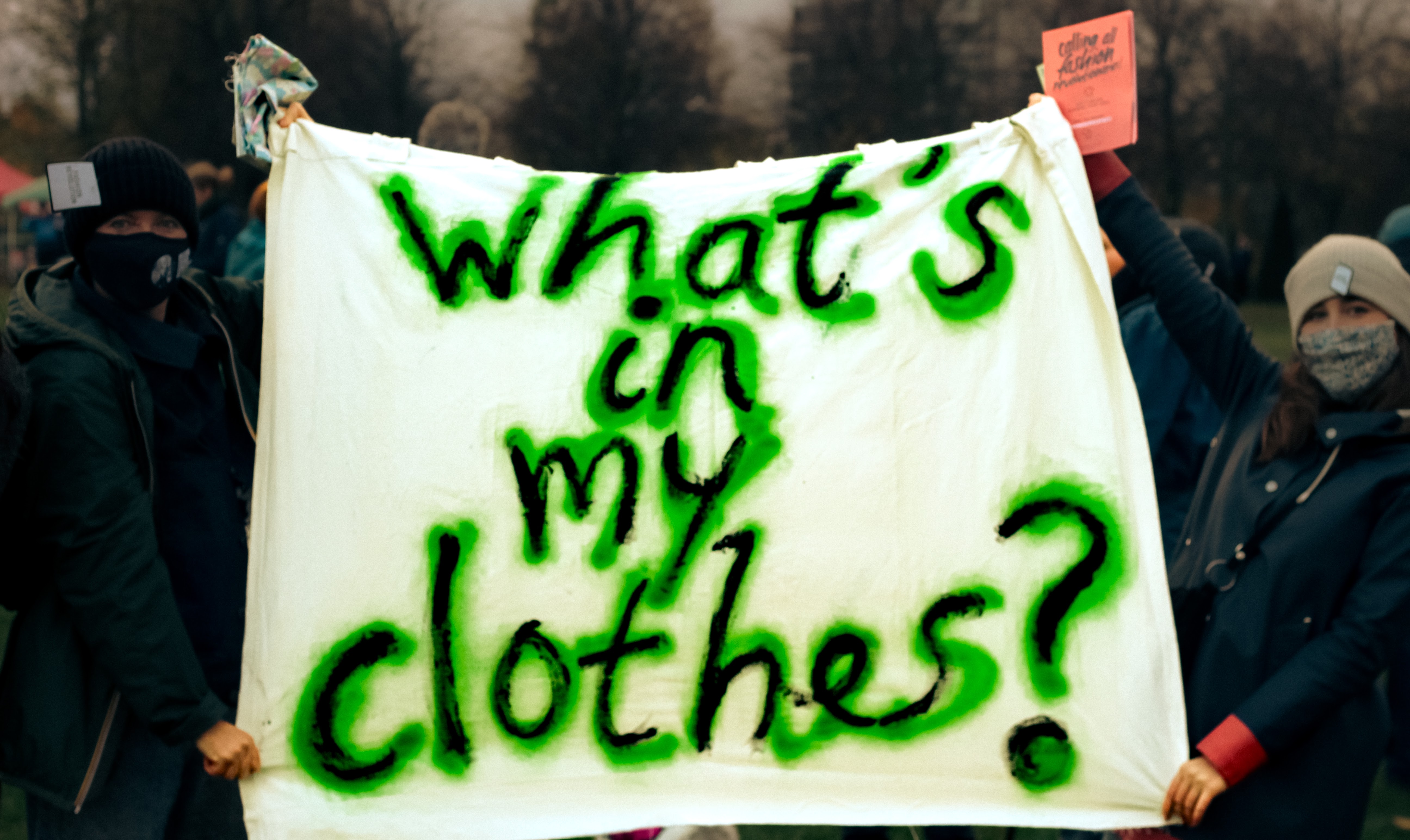
How was fashion addressed at COP26?
Unfortunately, fashion was largely left off the agenda at COP26, despite being a universal touchpoint not only culturally, but also for every major sector from fossil fuel extraction to agriculture. When it was addressed, corporate greenwashing was given a platform over the voices of the most affected people in the supply chain, who not only suffer at the hands of fashion’s exploitative working practices but are already experiencing the impacts of the climate crisis.
During COP26, the UNFCCC Fashion Industry Charter for Climate Action proposed new commitments to achieve net-zero emissions by 2050, 100 percent electricity from renewable sources across owned and operated facilities and the sourcing of environmentally friendly raw materials by 2030. These goals are designed to support the ambition of the Paris Agreement in limiting global temperature rise to 1.5 degrees Celsius above pre-industrial levels by encouraging brands to set science-based targets to reduce emissions across scopes 1, 2 and 3 of the supply chain.
However, what was glaringly missing from the conversation was the question of growth – both in terms of financial growth and production volumes. There were representatives from three major brands on the panel, ranging from luxury to high street, but according to our Fashion Transparency Index 2021, not a single one of them discloses their annual production volumes. In fact, just 14% (34 brands) disclose the number of products produced annually. We cannot have a discussion on carbon reduction without also discussing overall reduction and addressing consumption as a vital part of reducing climate impact.
With an average growth of 3-4% every year, the fashion industry must scale back and slow down. There is an enormous lack of visibility further down the value chain and this is where human rights and environmental abuse thrives – and where we need more stringent reduction commitments most. Our research shows that just 17% of brands disclose their annual carbon footprint at the raw material level. We need legislation that requires disclosure and reporting on impacts and brands and retailers must support suppliers to adopt science-based targets (SBTIs) by 2030.
Governments and brands must provide incentives and financial support for them to track data across the whole supply chain and provide them with the tools needed to reduce their overall environmental impacts. Brands and retailers, as well as policymakers, need to stop listening to the money and start listening to the science, align themselves to the 1.5 degree trajectory and be held accountable with meaningful sanctions and reparations when their actions go beyond planetary boundaries.
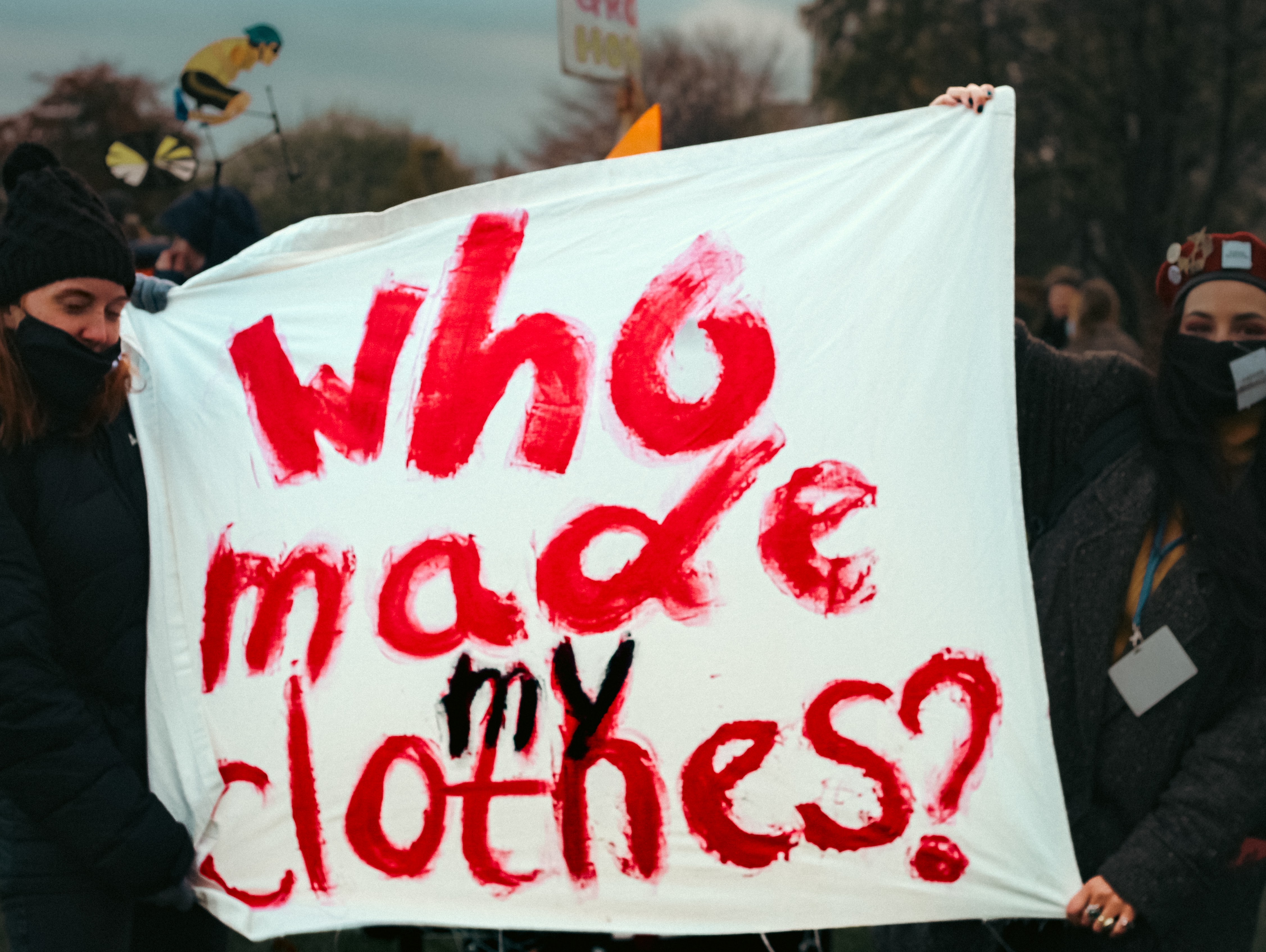
Additionally, a lack of representation from fashion’s supply chain workers and trade unions at COP26 climate talks meant that the needs of the people who make our clothes were not at the forefront of fashion’s net-zero goals. What’s more, the costs of meeting these goals, which include huge investment in renewable energy across the supply chain, could be falling on suppliers without support from the brands responsible for their environmental impacts. If we are to truly move towards circularity in the fashion industry, what does this mean for workers?
Whilst at COP26, we attended a session held by IndustriALL on the Just Transition where a representative from Unite the Union noted that not once had the UK government consulted trade unions on how to address issues of climate change and transition away from fossil fuels. It is vital that workers and union representatives are present during these discussions in order to safeguard their livelihoods. A fair transition means that workers who may need to transition into a new industry are consulted on their needs and receive appropriate support to do so by policymakers and brands, considering that they are the ones best-placed to decide what is best for them and their futures.
We cannot build a sustainable fashion future without systemic change, and that includes a shift away from exponential growth where workers’ needs are central to enable a fair and just transition.
Climate crisis and the fashion supply chain
The people who make our clothes – mostly women – are at disproportionate risk from climate change impacts due to their location in vulnerable regions in the Global South. The fashion industry’s race to the bottom to find the lowest labour costs from its suppliers, combined with its significant climate impacts, has now created a paradox where fashion’s most profitable supply chains are threatened by the very business model that props them up.
This stark reality is shown through a new working paper from Cornell University, which has found that apparel factories in some of the industry’s biggest hubs are at serious risk for flooding. The study looks at top manufacturing cities including Dhaka, Bangladesh; Guangzhou, China; and Ho Chi Minh City, Vietnam.
“It’s overwhelmingly apparent that sea-level rise is going to create a serious flooding problem in many of these key manufacturing regions; in one of the worst-case scenarios, in Ho Chi Minh City, almost 55% are in the flood zone,” says Molly Taft, author of ‘The Fast Fashion Industry Could Drown Itself’.
According to the paper, sea-level rise is not the only climate-related threat facing garment factories. High heat can also lead to dangerous working conditions in crowded factories without air conditioning. Under a worst-case emissions scenario, temperatures in China could rise up to 5 degrees Celsius, while Indonesia is set to see a 95% increase in heat waves by the year 2100. Another study from the Journal of Political Economy shows the impacts of climate change will hit fatcories in hotter, poorer countries hardest by decreasing productivity and economic output.
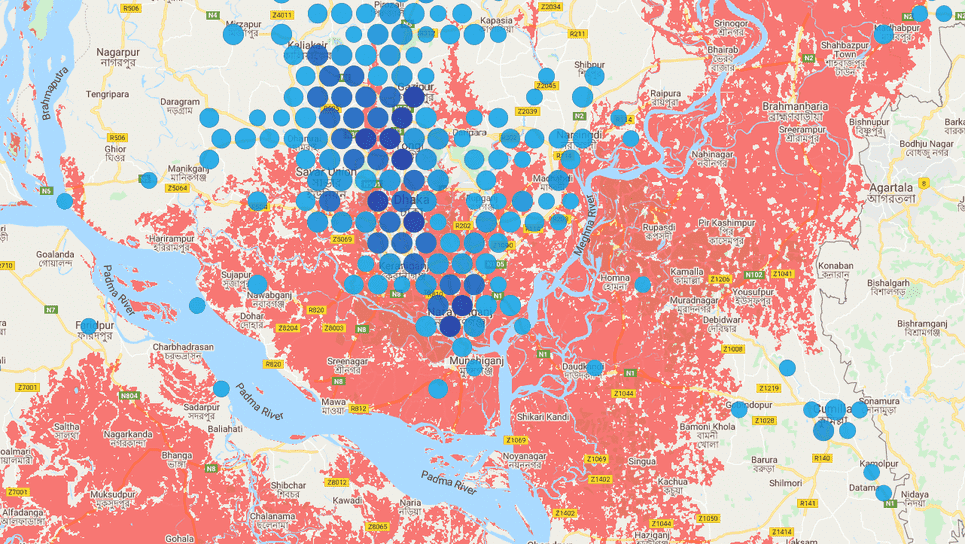
How will climate change impact garment workers?
Bangladesh, the world’s third-largest apparel exporter after China and Vietnam, faces three distinct flooding threats as a result of climate change: rising sea levels, increased river flooding as glaciers melt in the Himalayas, and increased frequency of intense rainfall (although not necessarily more rainfall). Most of Bangladesh lies in the delta of three of the largest rivers in the world―the Brahmaputra, the Ganges, and the Meghna. The topography of the country is mostly low and flat, with two-thirds of land lying less than 5 meters above sea level.
New research from our friends at Garment Worker Diaries further showcases this stark reality of climate change risk in Bangladesh’s RMG (ready-made garment) sector. This map shows the locations of apparel factories grouped by elevation above sea level, finding 20% of apparel factories in Bangladesh are below 5 metres elevation. This makes them very vulnerable to flooding by 2030 and beyond.
The locations of the factories in both datasets were extracted from lists compiled by Mapped in Bangladesh and Open Apparel Registry, made possible by increased supply chain transparency. The second is a data set provided by Climate Central, which accurately measures land elevations above sea level.
It’s important to note here that fashion brands and retailers generally don’t own the factories that supply their products. That means despite the clear risks posed by the climate crisis, the opaque, outsourced and deregulated fashion supply chain could prevent those in power from being held accountable.
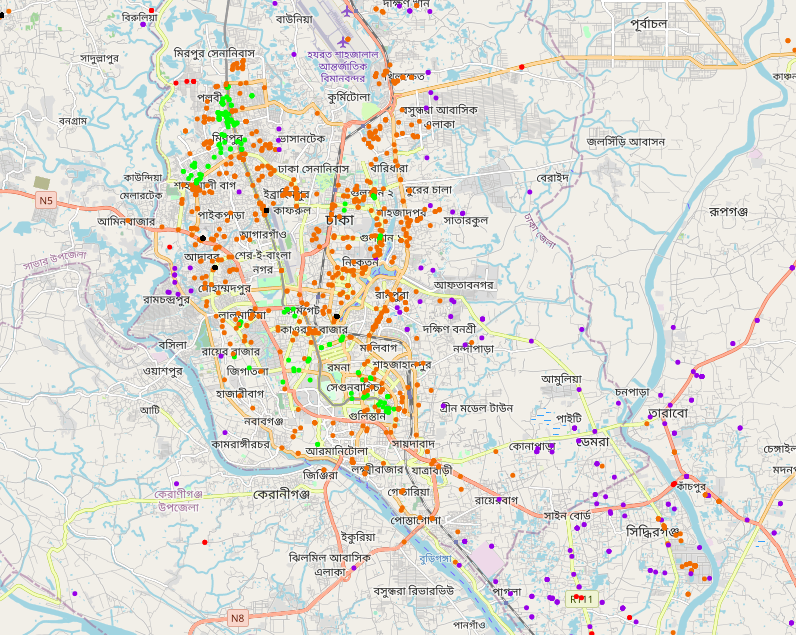
| Elevation | Number of factories | % share | Colour on map |
| At sea level or below | 5 | 0.1% | Yellow |
| Up to 3 metres above sea level | 56 | 1% | Red |
| 3 to 5 metres above sea level | 1,094 | 19.7% | Purple |
| 5 to 10 metres above sea level | 3,341 | 60.1% | Orange |
| More than 10 metres above sea level | 1,063 | 19.1% | Green |
| TOTAL | 5,559 | 100% |
Factory flooding doesn’t just put considerable capital investments at risk, it also threatens the lives and livelihoods of workers employed in the factories. When flooding occurs, they cannot work, and interviews with Garment Worker Diaries suggest that the majority of workers do not have a large financial safety net. Furthermore, if factories flood, it is likely that workers’ homes will flood as well because workers live close to where they work, so the data on factory elevations is indicative of how vulnerable garment workers’ homes are to flooding.
As one worker said: “As our houses are near the river, there is always the fear that someday the storm will end it all.” According to recent research by the Department of the Environment in Bangladesh, sea-level rise will be responsible for a 5.8-9.1% decline in rice production which will ultimately lead to issues of food scarcity, exasperating existing inequalities.
Garment Worker Diaries have also been asking garment workers in Bangladesh about their thoughts and experiences relating to climate change and how it impacts them. As previously shared in Garment workers and climate change: The socioeconomic link, the majority of workers are aware of the impact of climate change and the local effects of air pollution and flooding, with 62% of 1,154 workers answering “Yes” to the question “Are you concerned about climate change?”
In light of COP26 and pledges from world leaders to limit the impacts of the climate crisis, we also wanted to know what garment workers thought about how the government is holding fashion brands accountable for their negative environmental impacts. Fashion Revolution submitted a question for a recent round of Garment Worker Diaries surveys around factories and flood risk, which addressed this issue.
“Do you feel that the government of Bangladesh is doing enough to hold the major international brands and retailers sourcing from Bangladesh accountable for their environmental impacts on the climate crisis?”
| ANSWER | # OF RESPONSES | % BREAKDOWN |
| Very much so | 115 | 9% |
| Somewhat | 320 | 25% |
| Not at all | 164 | 13% |
| Don’t know | 587 | 46% |
| No answer | 95 | 7% |
| TOTAL | 1281 | 100% |
These results show us that governments may not be transparent enough or communicate their efforts to address climate change in an accessible and clear way. For example, since 2009 the Government of Bangladesh has issued over a dozen policies, plans and programmes to address climate change and disaster management in the country. The fact that nearly 50% (46%) of respondents do not know if the government is doing enough to mitigate the risks of climate change suggests that perhaps the people most impacted by climate change are the least aware of the government’s outcomes and progress against these important issues. Further, it may also suggest that it is not immediately clear whose responsibility it is to address issues of climate change.
Further, these results highlight the importance of brands to carry-out robust, water-related risk assessments and to disclose their processes for doing so as well as to disclose their water footprint at the raw material level, considering that just 5% of major brands and retailers do so. Workers are vulnerable to begin with, but the added complexity of rising sea levels means they are unable to safeguard themselves from the worst impacts of the climate crisis as they do not earn a living wage, which could help them have the financial savings to absorb some of the impact. However, workers should not be expected to subsidise the impacts of the climate crisis. Brands and retailers should work alongside governments and local communities in order to take a more active role in addressing these risks. To help facilitate this much-needed reform, we need to see more willingness from our legislators to take bold action now.
Why corporate accountability matters
At Fashion Revolution, we believe that transparency is a critical first step towards transforming the fashion industry, enabling access to accurate, credible data about brands’ social and environmental impacts within their supply chains. To achieve net-zero emissions by no later than 2050, the fashion industry needs to first and foremost track its environmental impacts using reliable, verified data – from water and energy consumption, hazardous chemical use to its carbon footprint across its entire supply chain before it can meaningfully mitigate these impacts.
The industry also needs to focus on raw materials given that half of the total greenhouse gas emissions, as well as over 90% of biodiversity loss and water stress occur during the extraction and transformation of resources. Considering the urgency of the plastic pollution issue, we would hope to see real action from the industry, but only a quarter of brands and retailers have targets for reducing the use of textiles made from virgin fossil fuels. To achieve net-zero, we need brands and retailers to reduce impacts across all fibre types with wide-scale adoption of sustainable and preferred materials, defined as those from certified, verified sources that can be traced from raw material to finished product and are connected to data-driven environmental impact reduction.
To address this, Fashion Revolution signed a policy request proposed by Textile Exchange where we urge policymakers to consider working with the apparel, textile, and footwear industry to develop thoughtful trade policy mechanisms to drive the uptake of these environmentally preferred materials to meet greenhouse gas emissions reduction in line with the Paris Agreement. Brands and retailers, policymakers and governments must also work together with garment workers and suppliers to understand how to centre them in a just transition, considering that supply chains in the global south will bear the greatest environmental and social costs. We demand resilience planning in this regard.
Legislation is an important driving force because many brands will not change unless forced to do so by law; we need to shift from voluntary frameworks to mandatory ones. We are in a climate crisis and we need legislation that requires fashion brands to monitor and report on their impacts and holds them accountable for their environmental and human rights abuses throughout the value chain.
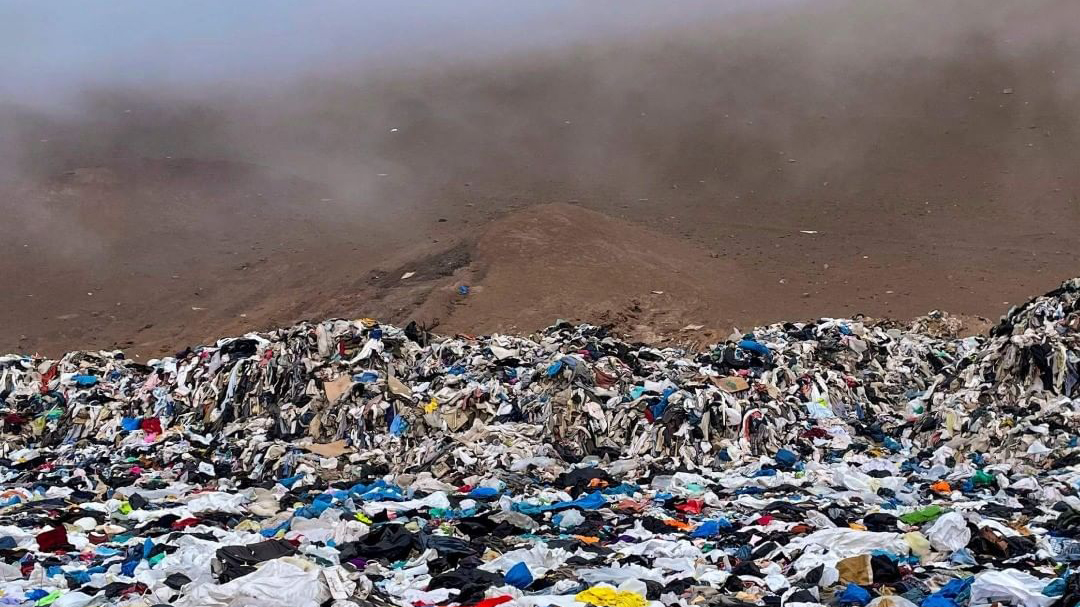
A post-growth future for fashion?
According to the OR Foundation, brands overproduce their SKUs by 20-30%. Some brands annually accrue billions of items that go unsold due to failures in demand forecasting, so there is a business case for producing less, producing smarter and producing better.
We may not be able to tell fashion brands to produce less – although this was possible in another time of crisis during World War 2 – but what we can do is encourage them to slow down. We know that one way to do that is through consumer demand or legislation and financial incentives, such as by holding brands accountable for their human and environmental impacts and raising taxes on the culprits. It’s really about the combination of policy, industry and cultural change.
Instrumental for de-growth is also confronting how clothing is marketed. As is well documented, overconsumption is linked to environmental and social issues and social media has been particularly influential in this over the last few years with the rise of fast fashion hauls where consumers unbox 100s of low-priced items; an act that perpetuates the idea that clothing is disposable and low value when in reality, the social, environmental and emotional costs are significant.
Therefore, reducing the incentive to consume is part of the equation (whether that be through rental and repair services or our adage that ‘loved clothes last’). However, ultimately, the responsibility is on brands to reduce the human and environmental impact of their business models and the products they are marketing. The easiest decision for a consumer to make about the ethics of a product is to not have to make a decision at all.
Overall, what we should be talking about more in the industry is ‘post-growth’. This means moving beyond just producing less, but reaching a point where the idea of success is not linked with the endless pursuit of growth and monetary reward – where we can really start to value people over growth and profit; a sentiment that is really at the core of Fashion Revolution. We need an industry that embraces the idea that there is value in conserving precious resources and restoring the environment and where the culture of transparency and accountability is at the core.
Head over to our climate crisis resource hub to find out more about fashion’s environmental impact and how to take action today.
Further reading
Fashion unites on a call-to-action for COP26
Why fashion needs a seat at the table at COP26
COP26, meet Fashion Revolution








